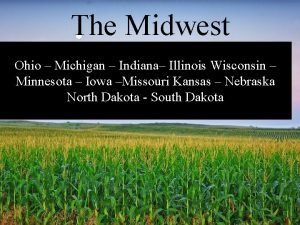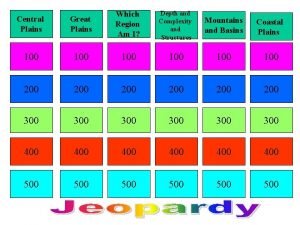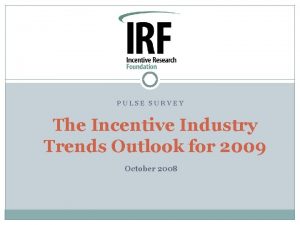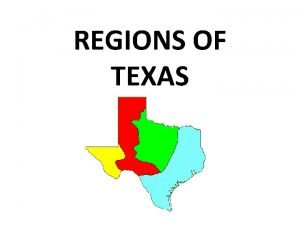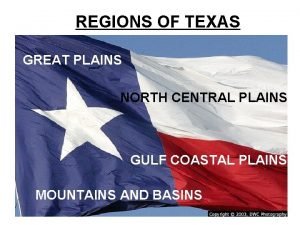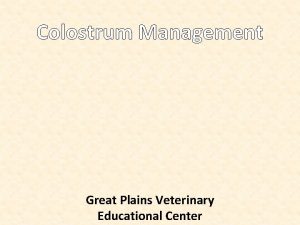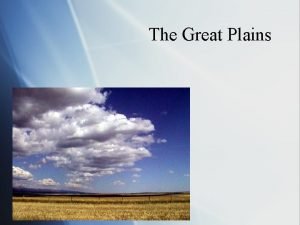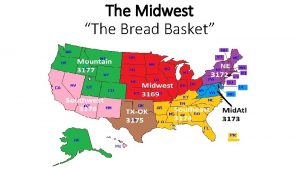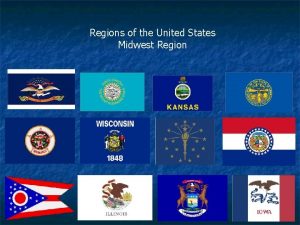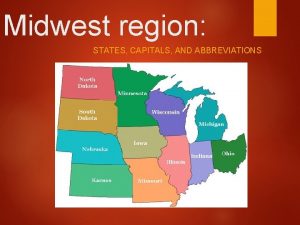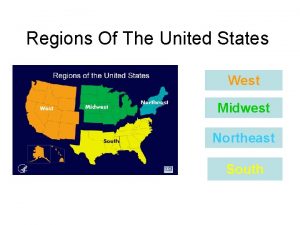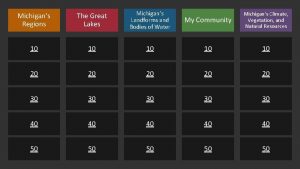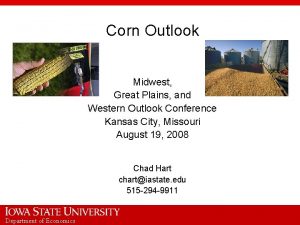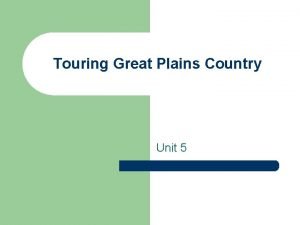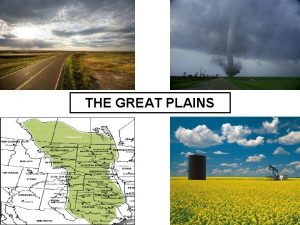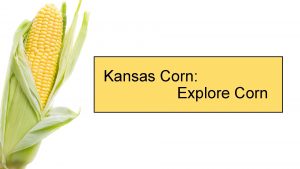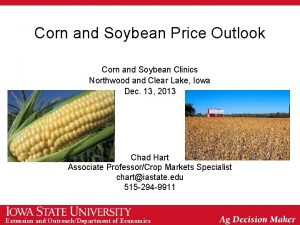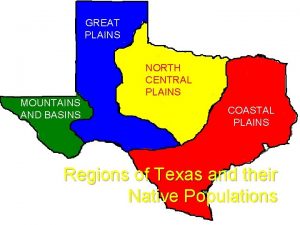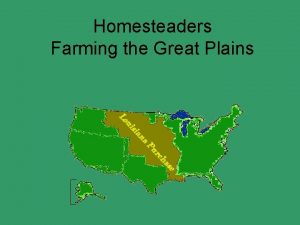Corn Outlook Midwest Great Plains and Western Outlook





























- Slides: 29

Corn Outlook Midwest, Great Plains, and Western Outlook Conference Kansas City, Missouri August 19, 2008 Chad Hart chart@iastate. edu 515 -294 -9911 Department of Economics

Nearby Corn Futures Department of Economics Source: CBOT nearby futures

Corn Supply and Use -0. 3 +0. 4 +6. 6 +573 +3 +100 +50 +150 -25 -22 +300 $6. 00 -0. 60 $5. 40 -0. 10 Department of Economics Source: USDA

Department of Economics Source: USDA-NASS, August 12, 2008

Crop Acreage Ratio of Harvested to Planted Acres Average 1998 -2007 2008 U. S. 90. 7% 91. 2% Iowa Illinois Indiana Missouri 97. 5% 98. 6% 97. 2% 96. 2% 94. 2% 96. 7% 95. 5% 92. 9% These 4 states are harvesting 877, 000 acres less than usual. Given projected yields, that’s 147 million bushels. Department of Economics

Crop Progress Department of Economics Source: USDA-NASS, August 12, 2008

Continuing Weather Concerns Department of Economics Source: The Weather Channel

Harvest Time Outlook Source: National Weather Service, Climate Prediction Center Department of Economics

Renewable Fuels Standard (RFS) Department of Economics

Renewable Fuels Standard (RFS) Calendar Year Billion Bushels Crop Year Billion Bushels 2009 3. 75 2008 3. 57 2010 4. 29 2009 4. 11 2011 4. 50 2010 4. 43 Department of Economics

Crude Oil Prices Source: U. S. Dept. of Energy, Energy Information Administration Department of Economics

Price Ratios (Jan. 2, 2008 = 1) Department of Economics Sources: CBOT and NYMEX nearby futures

Population 2008 2020 (billion) World 6. 678 2050 (billion) World 7. 601 (billion) World 9. 393 China 1. 330 China 1. 431 India 1. 808 India 1. 148 India 1. 362 China 1. 424 U. S. 0. 304 0. 336 0. 420 Indonesia 0. 238 Indonesia 0. 268 Nigeria 0. 357 Brazil 0. 192 Brazil 0. 212 Indonesia 0. 313 Pakistan 0. 168 Pakistan 0. 204 Bangladesh 0. 280 Bangladesh 0. 154 Bangladesh 0. 190 Pakistan 0. 278 Russia 0. 141 Nigeria 0. 184 Brazil 0. 228 Nigeria 0. 138 Russia 0. 132 Congo Source: U. S. Bureau of the Census, International Data Base Department of Economics 0. 189

Real GDP Sources: International Financial Statistics, Global Insight Department of Economics

Per Capita Meat Consumption Department of Economics Source: FAPRI

Exchange Ratios (Jan. 2007 = 1) Department of Economics Source: USDA-ERS

Exchange Ratios (Jan. 2007 = 1) Department of Economics Source: CME futures

World Corn Production Department of Economics Source: USDA, WASDE Report, August 12, 2008

Corn & Soybean Area Department of Economics Source: USDA-NASS

Corn & Soybean Area Growth rate of 1. 5 million acres per year Department of Economics

CRP Expiring Contracts Department of Economics Source: USDA-FSA

Land Availability Data from 1997 and 2002 Census of Agriculture Land in farms Total cropland Harvested cropland Cropland in pasture Other cropland Total woodland Pastureland (not crop) Land in other uses Department of Economics 1997 955 445 319 66 60 77 398 34 2002 938 434 303 61 71 76 395 33 2007 931 304 Source: USDA-NASS

Input Costs Department of Economics Source: USDA, Agricultural Prices, July 31, 2008

Department of Economics Source: USDA-NASS, August 12, 2008

Stocks-to-Use Ratios Department of Economics

Acreage Competition for 2009 ØMore land will shift to corn and soybeans ØHigh prices for both crops ØTight stock situations ØDemand remaining fairly strong ØFutures price ratio favors corn (8/15/08) ØDec. 2009 Corn = $5. 925 per bushel ØNov. 2009 Soy = $12. 19 per bushel ØCurrent ratio = 2. 06 ØHistorical average ratio ~ 2. 3 Department of Economics

Thoughts for 2008 ØLooking for a later than average frost ØWet spring/flooding impacts will likely show up in yields ØDemands will adjust with prices ØSlack capacity in ethanol ØFeed wheat vs. coarse grains ØHow about the dollar? ØWeaker dollar has helped hold up exports ØMost important ag. statistic: Crude oil price? ØHigher prices provide room for ethanol ØBut also lead to higher input costs Department of Economics

Thoughts for 2009 and Beyond ØMany of the storylines from the past few years will continue ØThe race of supply vs. demand ØThe competition for acreage ØEthanol’s buildout ØLivestock’s adjustment ØEnergy price & general economy concerns ØMarket volatility will remain high ØTight stocks ØLink to the energy markets ØMore market players with different trading objectives Department of Economics

Thoughts for 2009 and Beyond ØFarming is a competitive industry ØInput costs are racing to catch up ØFertilizer and fuel prices leading the way ØLand prices/rents have had a strong run Ø“What’s your break-even price? ” ØThe potential and the pitfalls of cellulosic biofuels ØOne crop, many demands Reportedly ancient agricultural curse: May you live (and market) in interesting times. Department of Economics
 Is ohio in the midwest
Is ohio in the midwest Great plains vs central plains
Great plains vs central plains Symbols in chapter 9 great gatsby
Symbols in chapter 9 great gatsby Outlook incentive travel
Outlook incentive travel The 4 regions of texas
The 4 regions of texas North central plains cities
North central plains cities North canada provinces
North canada provinces Microsoft business solutions great plains
Microsoft business solutions great plains Great plains ada center
Great plains ada center Great plains texas landforms
Great plains texas landforms Great plains
Great plains Settling on the great plains section 2
Settling on the great plains section 2 Great plains veterinary educational center
Great plains veterinary educational center Great plains westward expansion
Great plains westward expansion What words describe the great plains?
What words describe the great plains? Great plains network
Great plains network Great plains ultra till
Great plains ultra till Bhabar terai bhangar khadar
Bhabar terai bhangar khadar Great western schism
Great western schism Bread basket of america
Bread basket of america Nnn
Nnn Midwest region physical features
Midwest region physical features Midwest organics recycling
Midwest organics recycling Midwest states abbreviations
Midwest states abbreviations Mbdh
Mbdh Midwest region wa
Midwest region wa Topography of the midwest
Topography of the midwest West midwest south northeast
West midwest south northeast Diocese of the midwest
Diocese of the midwest The midwest landforms
The midwest landforms
